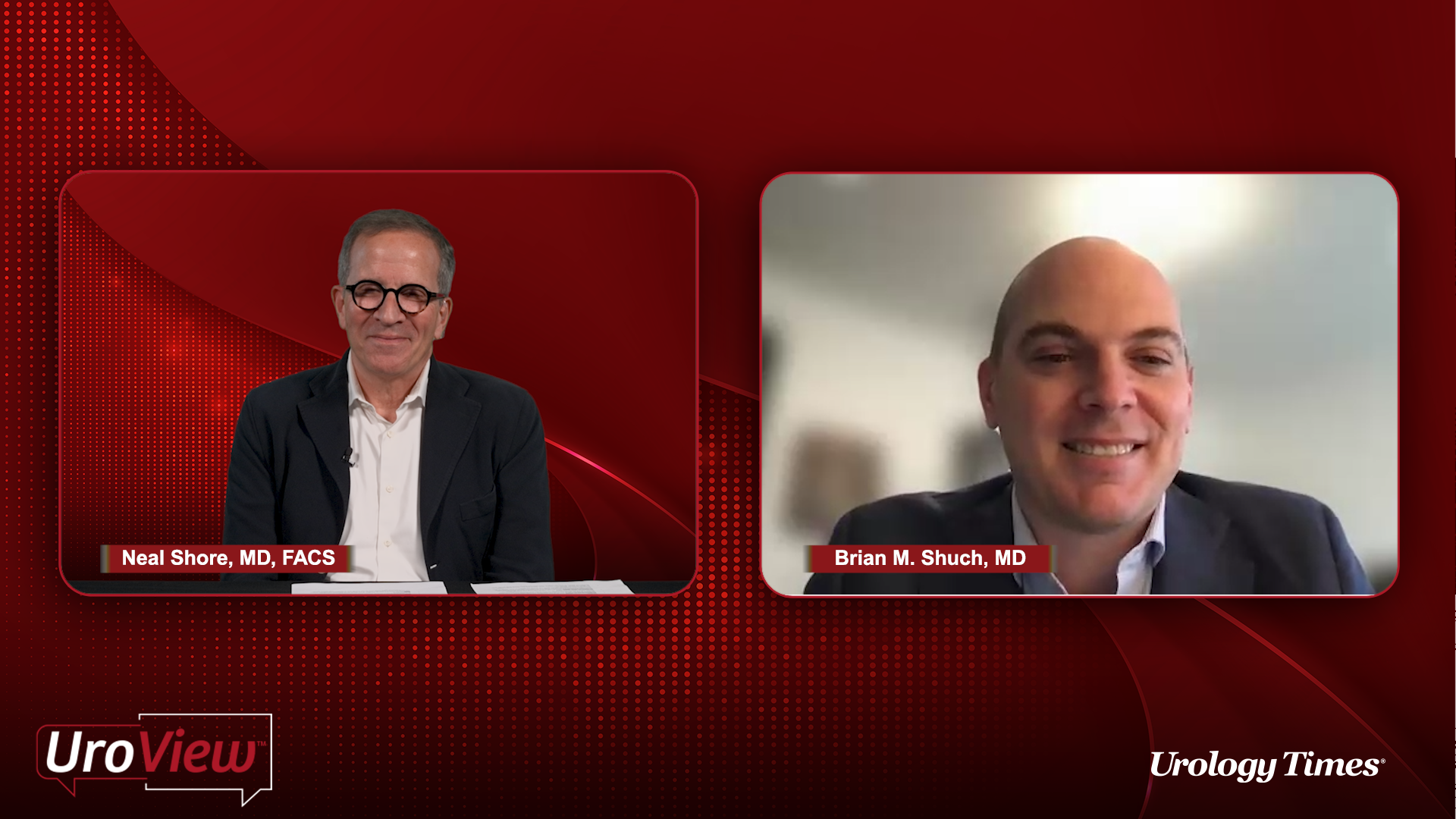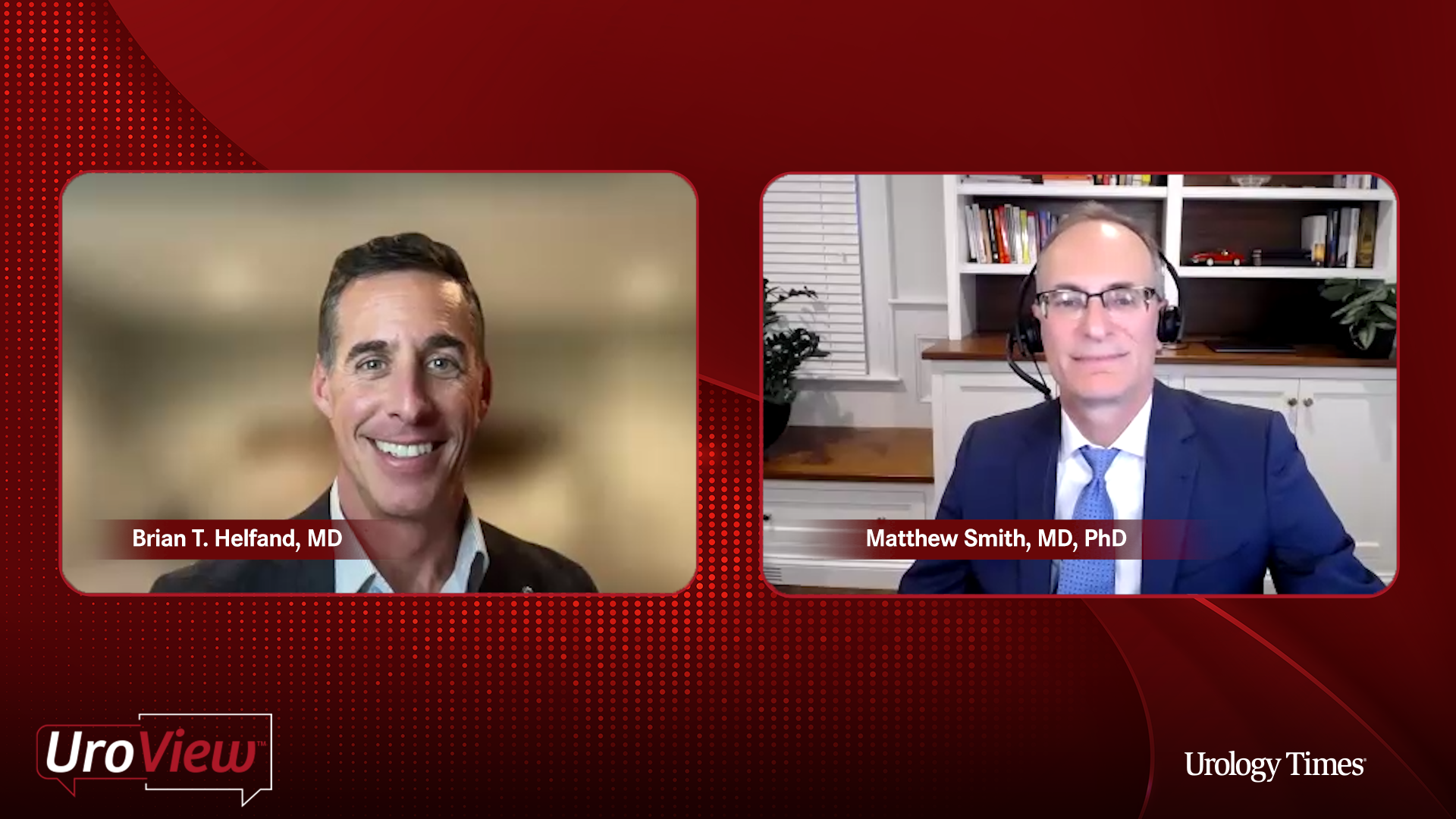Video
Implantable Tibial Nerve Stimulation: eCoin
Drs Rogers and MacDiarmid discuss data from feasibility and pivotal studies with eCoin, a tibial nerve stimulation device, and how it compares to other third-line treatments.
Alexandra Rogers, MD: Scott, we can both agree that it was meaningful to be part of the eCoin trial. Could you review some of those pivotal results?
Scott MacDiarmid, MD, FRCPSC: As you know, eCoin had a feasibility study—we’ll come back to that in a few moments—and it had very favorable results. There’s a pivotal trial that has been wrapped up, and the product is now hoping to get FDA approval soon. It was a study that evaluated the efficacy and safety of the eCoin device for the treatment of refractory overactive bladder. The primary end point was at 48 weeks of stimulation, or 52 weeks after implantation. It was 132 patients who were finally evaluated. Just by chance, about 98% were women. They had refractory overactive bladder and had to fail at least 1 medication. They could have failed either botulinum toxin or PTNS [percutaneous tibial nerve stimulation] as well.
We decided when we helped with the study design that if they had failed the sacral neurostimulator, they weren’t in the study. The average age was 64. There were mainly women, but some men with refractory overactive bladder. They were leaking 4.3 times a day at baseline. That’s moderately severe; that’s a fairly leaky group. It was an office-based procedure, we can go through that in a bit. We used a template. You had a choice, but I think everybody did it under local [anesthesia] in their office. Basically, the device, it takes about 20 minutes to put in. It doesn’t take much longer than that. We were overfastidious and overcareful in terms of wound care because this was a new treatment. We were using a shower bag and dressings, etc, early on. It was kept dry for 2 weeks. There were good wound checks at 1 to 2 weeks. They used a compression sock for a month, and had limited biking and heavy activity for 2 months.
We looked at the efficacy at 1 month, 2 months, and 3 months, right up to the usual 6, 7, or 8 times over the total of 48 weeks post-stimulation. We used typical things, like bladder diaries and quality of life. The primary end point—this is important—was the percentage of patients at 48 weeks who had a reduction in urge incontinence greater than or equal to 50%. The FDA likes that as a primary end point. I like it. It’s a responder analysis, because we know that the patient population is happy when they’ve achieved that degree of continence control or improvement in their incontinence. Then we use OAB-q [Overactive Bladder Questionnaire], we use the Patient Global Impression of Improvement, and a Likert scale in how satisfied you were. Then there were some general questions comparing this to other treatments you’ve had.
It was a well-designed study. There were 15 centers, and it was open-label. We looked at trying to do a sham. It’s very difficult to do a sham. One of the reasons why a 1-year end point was agreed upon by the FDA is because that can help eliminate some placebo effect if you follow someone for a full year. It also gives you great safety information.
Alexandra Rogers, MD: Those are all good points. I want to make it clear that there’s no screening that excluded implant of a patient. That’s important to note. We also did a 48-week survey asking patients, responders and nonresponders, their experience with the therapy. I found this very encouraging, because a lot of times in medicine, it’s subjective feedback that ends up counting more than the objective. That’s obviously very important, but sometimes subjective feedback is what pushes therapies that you deliver to patients, and 89% would recommend it to friends and family members. Ninety-seven percent felt the procedure was well explained, which is incredible, because we’re used to talk tracks with sacral [stimulation], and we didn’t know what we were doing—or at least I didn’t. I just said, “We’re going to take this nickel thing, we’re going to put in your leg, and we’re going to turn it on.”
The feasibility data look good, and patients signed up for that with pretty limited counseling overall. When patients were asked, “Would you prefer another therapy over eCoin?” only 4% or less would choose one of the legacy therapies or medications, or one of our existing third-line therapies. That shows that subjectively, patients did way better than the objective data, and I always find that encouraging because patient experience is becoming more of a hot topic in medicine.
Scott MacDiarmid, MD, FRCPSC: You mentioned the feasibility study data. It did mirror the results as far as the efficacy and safety data with the pivotal study. Sixty-eight percent of patients at 48 weeks had a reduction greater than or equal to 50%. I like the following numbers: 43% of patients were 75% improved or greater. The dry rate, which means you’re dry in a 3-day diary, was 21%. If you think about, it’s almost 70% of patients who were 50% improved or greater, it was approximately 40% of patients who were 75% improved, and approximately 20% of patients were dry. If you’re leaking 4.3 times a day at baseline, those are good data.
If you look at the curves, the first time that efficacy was evaluated was after 4 weeks of stimulation, and they had a lot of the benefit by then. But by 8 weeks, you saw that’s where the plateau started, and then the efficacy data persisted. I forgot to mention that the tibial nerve was being stimulated for 30 minutes every 3 days for 18 weeks, and then it was every 4 days to the end of the study. There were very good urge incontinence data in terms of responders. The median reduction was approximately 70%. They went down to about 2.6 leaks a day after starting at 4.3. The quality-of-life scores had dramatic improvements that were very durable as well for the OAB-q and the other ones I’ve mentioned.
As far as tolerability and safety—that’s what we were concerned about—it was very well tolerated. There were a lot of mild and moderate adverse effects, like some swelling in the ankle, some discomfort, and maybe a little redness, and those settled down. As far as infections, there were 4 explantations [removals of the device]. Three were due to infection—a wound infection or an infection of the implant—and one was felt to be an atopic dermatitis. There was such a skin reaction, and even though things settled down and the device wasn’t infected, the device was removed. That was the call by the physician at the time. The infection rate was around 2.3%, which is what was expected. That’s what Valencia [Technologies] was hoping for. When you put an implant in, based upon other parts of the body and other implants, that was very acceptable.
Alexandra Rogers, MD: It’s definitely within the range of 2% to 6% explant rate for neuromodulation devices per the FDA. They’re in the ballpark for what the bar is.
Scott MacDiarmid, MD, FRCPSC: Tell us a little about the feasibility trial that some of us were involved with, my friends from New Zealand, etc. What were their results?
Alexandra Rogers, MD: It was 46 patients, and it showed similar safety and efficacy results, where at 12 months there was a 65% responder rate and a 26% dry rate, which was very compelling. Seventy percent were better, or above, subjectively. The stimulation paradigm shifted slightly from the feasibility to the pivotal study, where in the feasibility, stimulation for the first 12 weeks was every other day for 30 minutes, and then it shifted to every 15 days for 30 minutes thereafter. The pivotal optimized the stim [stimulation] paradigm more; there’s still a lot of room there to grow and explore. The battery longevity was slightly lower. It wasn’t an average of 3 years, it was more like 1 to 2 years. So once again, an improvement going into the pivotal study.
But what really matters is these are New Zealand surgeons and 3 United States surgeons, and no one was high volume in sacral neuromodulation [SNM] going into it necessarily, and 100% were completely naive to what the procedure was. Only 3 were repeats going into the pivotal study. Scott, you presented the feasibility results at SUFU [Society of Urodynamics, Female Pelvic Medicine & Urogenital Reconstruction meeting] in 2018. I saw those data, and I’ve been wanting…implant for a very long time. People talked about it and kicked it around, and being someone who’s high volume in SNM and PTNS, I felt like that was such a sweet spot to meld those 2, pros and cons with each of them. That’s why I got involved, because what you presented was real. It was very compelling for something in its infancy.
How do you think eCoin addresses some of the perceived weaknesses of other third-line therapies?
Scott MacDiarmid, MD, FRCPSC: These are all imperfectly good treatments, and if you look at the perceived or real weakness of each of the other 3, eCoin would address the retreatment rate and the need to come to the office by the patient with PTNS. There are some long-term third-party payer issues with PTNS. There’s a perception by physicians, perhaps an economic one, that you need nurses and infrastructure. If you think through those, it likely will address most, if not all, of those.
Botulinum toxin is another great treatment, but there’s a retreatment rate that some patients don’t like. There’s a fear of retention, even though it’s low. It’s something that they hear. I also hear people think it’s a toxin. Some people are concerned about botulinum toxin. After you speak to them, you can put any concerns on that to rest, but it does address those. With sacral nerve stimulation, whether it’s perceived by the patient, it’s more invasive. I like the fact that it has a test, but it is surgery and the patient perceives that, and they may or may not wish to have an operation. Like all these treatments, they’re imperfect in terms of sometimes the long-term durability of some of these treatments. But also, I’m not sure how much it is at a physician level, but certainly at a third-party level, there are cost concerns in particular with that treatment.
Transcript edited for clarity.




